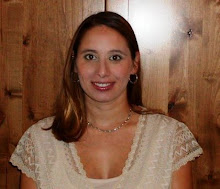


Just when things start to get into a lull with this project, something interesting happens. This week, I went out into the field only to find a different kind of artifact. Growing out of one my back dirt piles (dirt sifted from the units), were TWO Canna lily plants. To top it all off, they were two different varieties as well. I have been collecting samples for the environmental survey of the property, but I wasn't expecting to get data back so quickly. Once Eric Becker, Historic Columbia Foundations Horticulturalist, examined them a wave of excitement began to take hold of us. Those plants have not bloomed on the Hampton-Preston property since before the commercialization in the 1940s. We even have pictures of the Cannas from the early 20th century when the college was there. This was an exciting find and to top it off, since they were actually growing (very well...must be all the rain), that meant they were viable. Amazingly seed can remain viable for up to 700 years!!! So it really isn't that surprising that the seeds remained viable, but my thoughts turn to all the activity on the property not disturbing the suitable environment for hibernation in these seeds. Eric carefully removed the plants from the back dirt pile, to cultivate them. Cool huh?
Once Eric described to me what the seeds looked like, see picture above, it occurred to me that I had seen something like that recently. In fact drying on the screen, from that very unit, were two seeds still in hibernation. It is truly amazing how this all came about. So with our hopes high we decided to re-screen the back dirt pile to look for more seeds. You see my shaker-screens are 1/4 in mesh, which is just about the size of the seeds. It is possible there were more, they just happened to fall through the screen. So we decided to use one of the drying racks to re-screen the dirt. The drying racks, the screens the artifacts are placed on to dry after washing, are made with 1/8 in screen (window screen). Unfortunately we didn't find any more seeds. However, we will be taking lateral soil samples from each level, so it will be exciting to see the results from that as well.
This is great news for everybody, not just for the archaeology! When Historic Columbia Foundation begins to restore the gardens at the Hampton-Preston, they will be able to have the Cannas that once bloomed in the beautiful gardens...bloom again.

1 comment:
My hands were too full to comment last time. . . I think it is exceptionally cool that your archiology project has an overlap with botanty!
I hope you post more on the dig soon!
Post a Comment